Forestry Visored Field Cap
CATEGORY: Version
SKU: 75.GOR.01.03.001.000
Estimated market value:
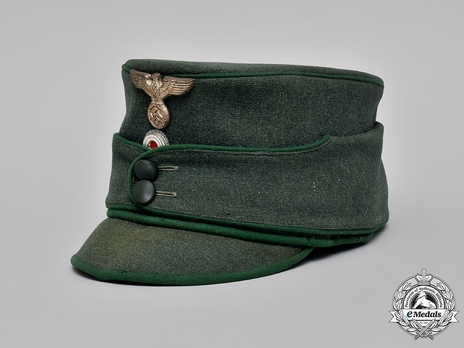
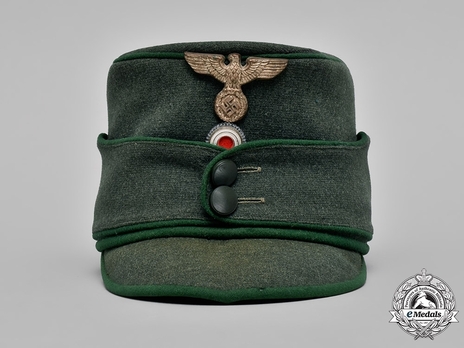
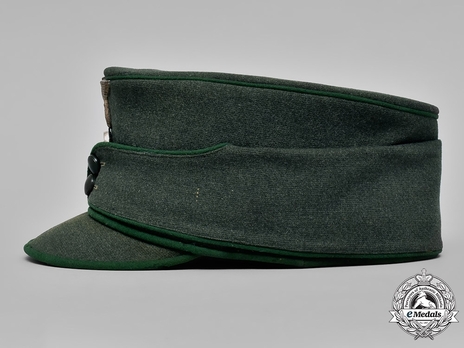
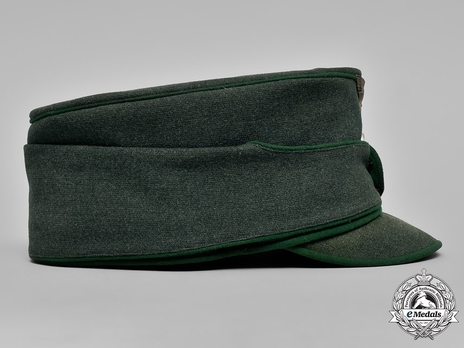
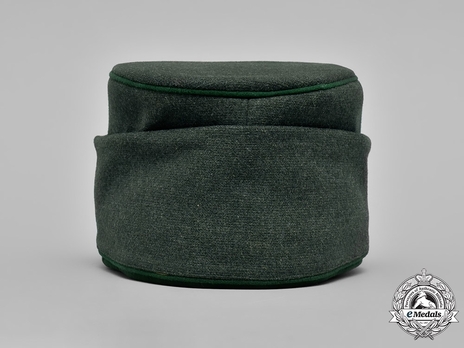
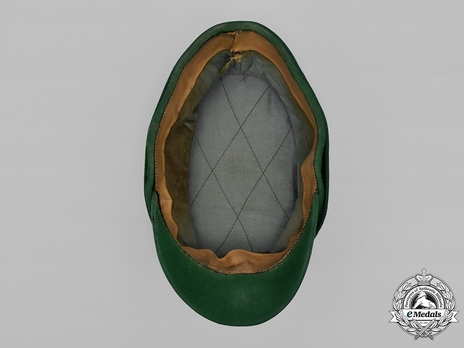
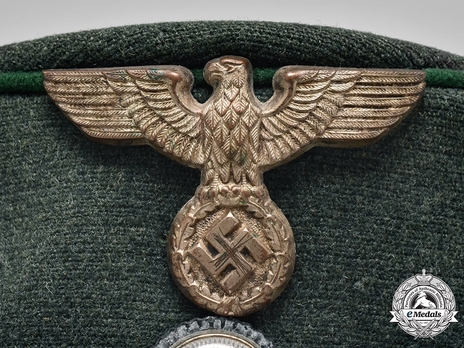
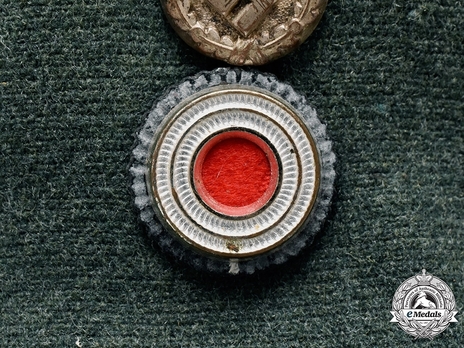
Estimated market value:
Constructed of smooth field-grey wool. The cap features fold-down panels providing neck protection which, when not to use, are secured to the cap by two dark green bakelite buttons on the left flap meeting reinforced buttonholes on the right flap. Pinned into the peak of the cap is a Reichsadler-style German national eagle clutching a wreathed mobile swastika, constructed of silvered bronze and measuring 55 cm (w) x 35 mm (h). Underneath the eagle sits a tri-colour cockade with a red felt centerpiece, measuring 22 mm in diameter. The cap features a protruding visor with cardboard reinforcement, with the obverse constructed of forest green wool, bands of which also adorn the top and bottom of the cap and panels. The interior features a 40 mm-wide brown leather sweatband securely held in place by a row of machine stitching. The interior also features a complete, padded, grey rayon liner stitched in a diamond pattern. The cap is unmarked and measures 155 mm (w) x 283 mm (l) x 135 mm (h). The visor reinforcement has a single crack, and there is some soiling evident to the sweatband, but the cap is in an otherwise extremely fine condition.
Like every organisation during the Third Reich, forestry was placed under the control of the NSDAP. The Reichsforstamt (National Forestry Office) was created in 1934 to replace the regional forestry departments that had existed prior to this date. The goals of the Reichsforstamt were to extract economic value in the form of timber from the forests for the German industry, as well as preserve nature and natural monuments for the people as a part of German culture.
A sub-department for professional hunters employed by the government was created. Hunting matters had formerly been a part of the Ministry for Food and Agriculture, but were now placed under the influence of the Reichsforstamt.
Private forestry matters were placed under the care of the Reichsnährstand (National Nutritional Estate) in 1941.
The Reichsforstamt was headed by Luftwaffe leader Hermann Göring as Reichsforstmeister (minister of forestry).
The Reichsbund Deutsche Jägerschaft (National Society of German Hunters) was founded in 1934 as a statutory corporation for non-professional hunters. All existing hunting societies were disbanded and memberships transferred to the Deutsche Jägerschaft. Membership was mandatory for everyone with a hunting license.
Hermann Göring led the organisation as Reichsjägermeister (minister of hunting).
The Reichsforstschutz or Forstschutzkommando (Forestry Protection Service), in 1943 renamed to Forstschutzkorps (Forestry Protection Corps), was a paramilitary force instituted in February of 1940 in the General Government (occupied Poland). Made up of German forestry officials and ethnic Germans from Poland, the Forstschutz was tasked with regular forestry duties, as well as patrolling and protecting woodlands to keep them from being used by the Polish resistance. In 1942, Forstschutz personnel was also stationed in the Eastern European occupied territories where their work was heavily focused on anti-partisan operations.
Very little is known about the Forstschutz organisation today, and all items related to it are exceedingly rare.
The visored field cap worn by Forestry personnel is in the style of a mountain or ski cap. It was also referred to as a “Baschlikmütze” and was worn in inclement weather and colder climates by all ranks.
The cap was made of grey-green cloth (including the visor) with dark green visor lining and piping. The lining is generally quilted, but exceptions exist. When not in use, the pliable ear and neck cover was held in place above the visor by two small green horn buttons.
A metal cap eagle and a cockade underneath were worn on the cap top. In the case of private foresters, the eagle was replaced by a metal crest.
Forestry personnel in the service of the Heer (Army) or Luftwaffe (Air Force) wore the same pieces of headgear as regular forestry personnel, but with the insignia of their respective organisations.

Comments
Sign in to comment and reply.


Scroll Top